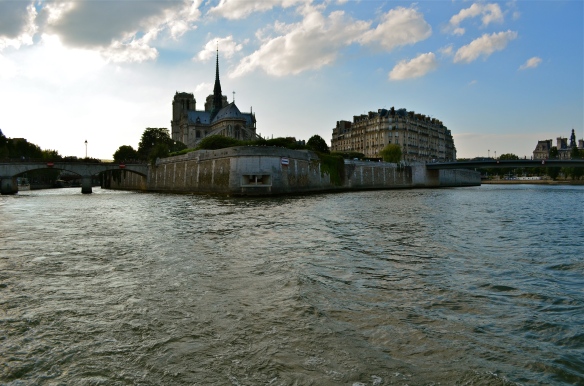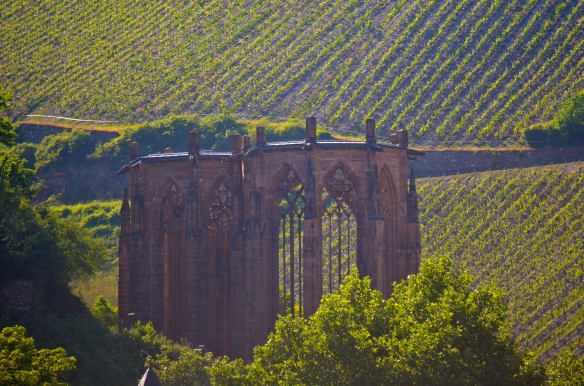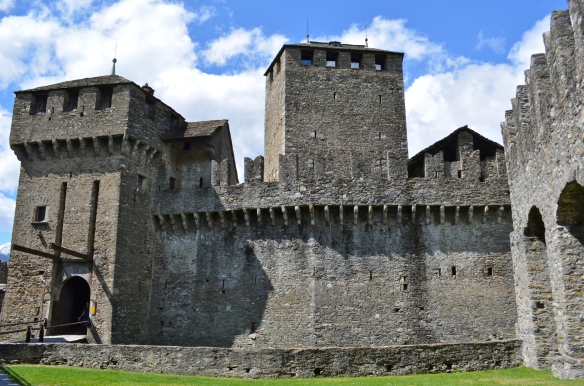
Archipelago – ar·chi·pel·a·go. noun \ˌär-kə-ˈpe-lə-ˌgō,
- An expanse of water with many scattered islands
- A group of islands

There aren’t that many true archipelagos; Stockholm’s archipelago is the real deal. It has more than 30,000 islands! I guess it’s not all the surprising. Stockholm itself is made up of 14 islands that are connected by 50 bridges on Lake Mälaren and the Baltic Sea. It’s definitely a maritime city. When we visited in March, I took a boat tour of the area, but it was too cold to really enjoy the outer islands in the Baltic.

For Stockholm’s residents, the archipelago is a easy escape and their holiday retreat. There’s an island for everyone. Partiers, those looking for peace and quiet, sunbathers, woodsy hikers, campers, B&Bers, luxury hotel lovers…there’s an island for everyone. The archipelago is easily accessible via ferry. There are two main ferry companies. One with larger, faster boats (Cinderella Båtarna), the other (Waxholmsbolaget) with charming smaller boats that make it feel less like a commute and more like a pleasure cruise.

We took the Waxholmsbolaget boat to Vaxholm. The journey was half the fun. The boats are adorable with wood interiors and brass details. It’s the perfect place for a picnic. We sat outside and watched the hustle and bustle recede. I was worried about not hearing our stop. The boat docks, people disembark and it pulls away with remarkable speed. I shouldn’t have been, locals (who all speak great English) volunteered to let us know when we got close.

The Cinderella boat back was larger and a bit faster, but didn’t have quite the charm. My advice, take either one. You can’t go wrong.

Stockholm’s archipelago is a UNESCO World Heritage site. It consists of 20,000-50,000 islands off the coast of Sweden that offer a buffer to the Baltic Sea. “Skärgården,” as the area is known to the Swedes, was formed by glaciers that carved out and deposited granite that protrudes from the water. As a result, it is full of reefs and shallows The islands get progressively less rocky, sandier and smaller with fewer trees the further you get from Stockholm.

Vaxholm is an idyllic archipelago town with well-preserved wooden villas from the turn of the 19th century. Everything about it says cottage cute. It has nice restaurants (especially if you like fresh fish), a wonderful bakery, charming cafés, and way cooler shopping than your average resort town. I wanted to decorate with and wear things from just about every shop.


 Although you can rent bikes, we spent an afternoon doing a big walking tour of the area. There are plenty of trails, sidewalks and quiet streets. We tried to get away from the business district to get a look at how people live there. Even without the cute shops, restaurants and hotels, it was very picturesque. I loved the brightly colored houses and cute gardens. We saw backyard meals, people walking their dogs, mowing their lawns and cleaning out their garages.
Although you can rent bikes, we spent an afternoon doing a big walking tour of the area. There are plenty of trails, sidewalks and quiet streets. We tried to get away from the business district to get a look at how people live there. Even without the cute shops, restaurants and hotels, it was very picturesque. I loved the brightly colored houses and cute gardens. We saw backyard meals, people walking their dogs, mowing their lawns and cleaning out their garages.

The have a decent sized marina and with the essential nearby farm stand and ice-cream stand. Across the narrow strait is the historic Vaxholm Fortress. From the shore, you can see several small islands with adorable but solitary houses and a dock. Vauxholm is the last easily accessible place in the archipelago by car from Stockholm and is even accessible by bus. In fact, it is the most populated archipelago town and people live there year-round. Tiger Wood’s ex-wife Elin Nordegren grew up there. Don’t worry through, there’s no hustle and bustle, it’s perfectly tranquil.















































































































